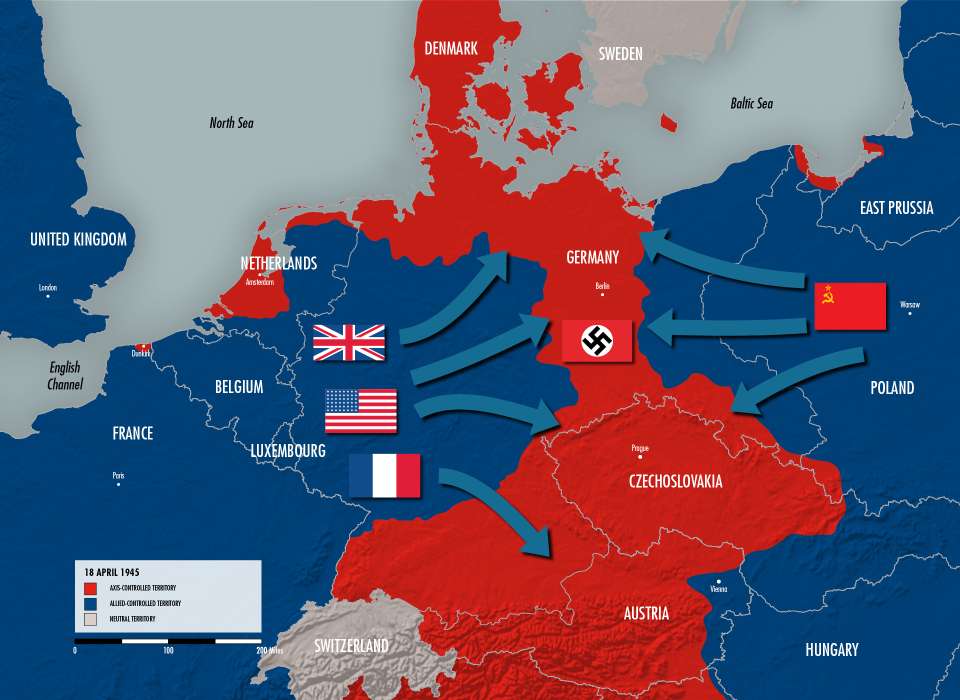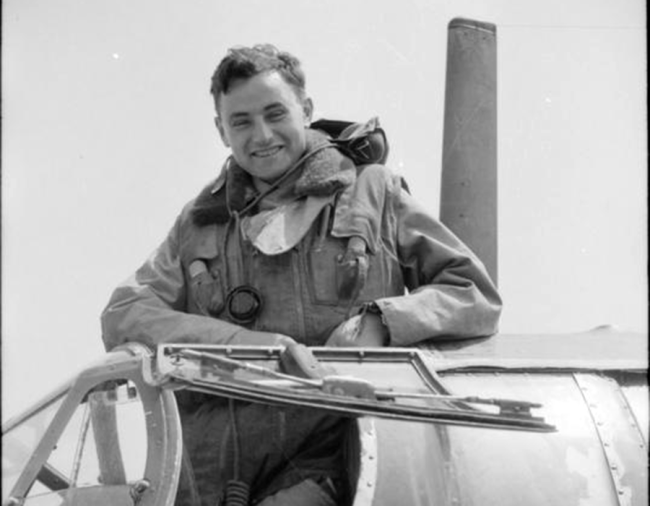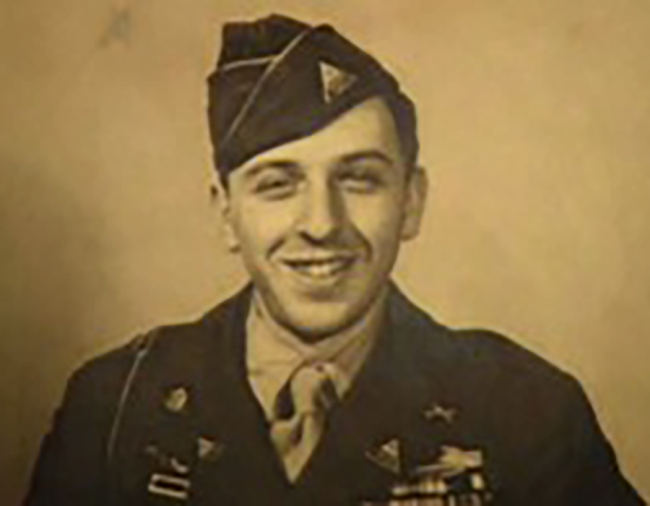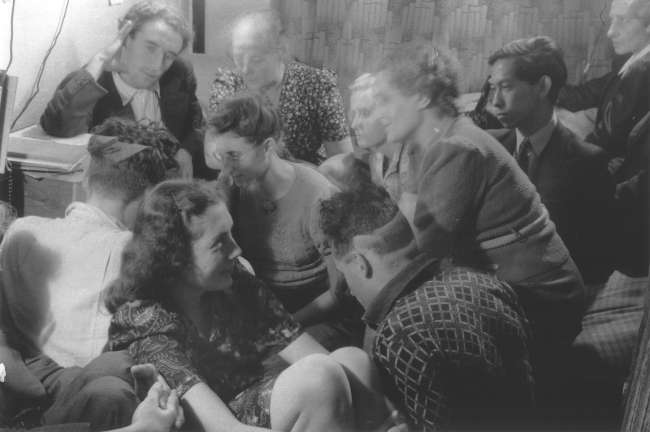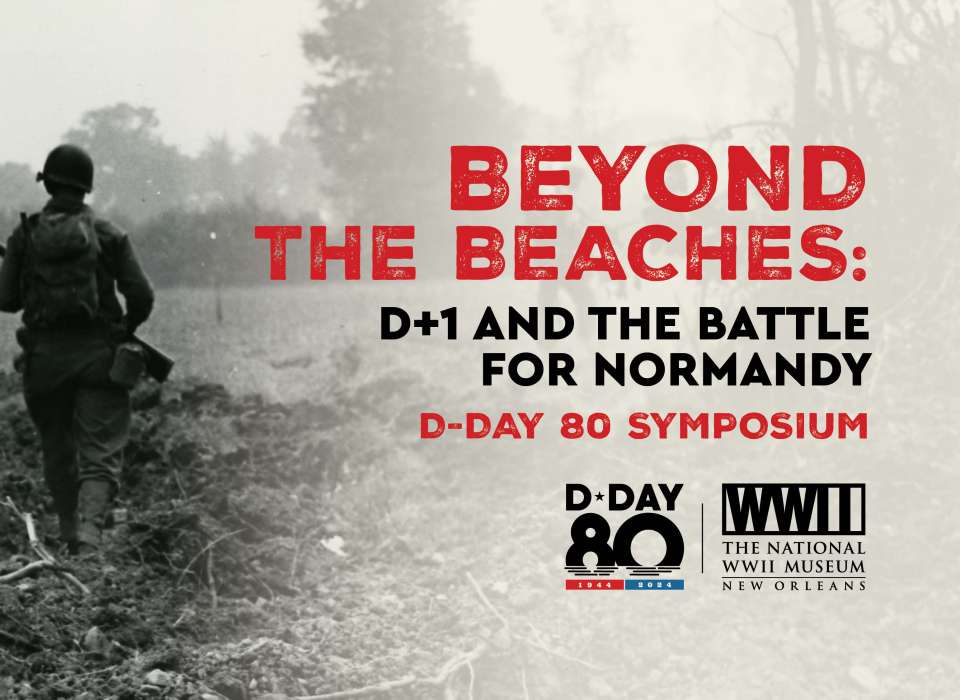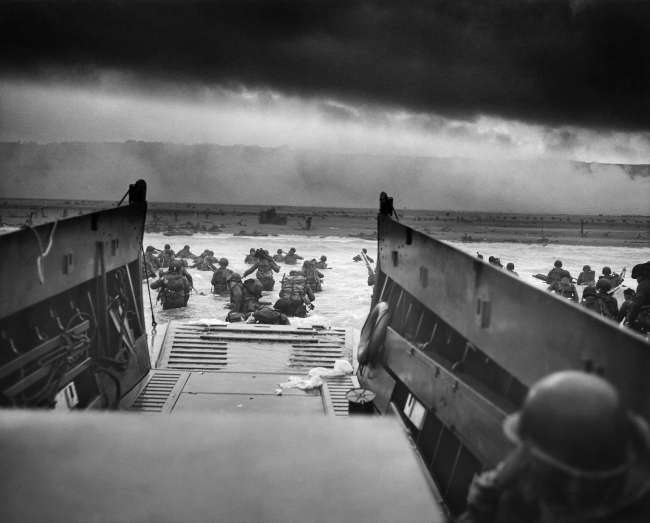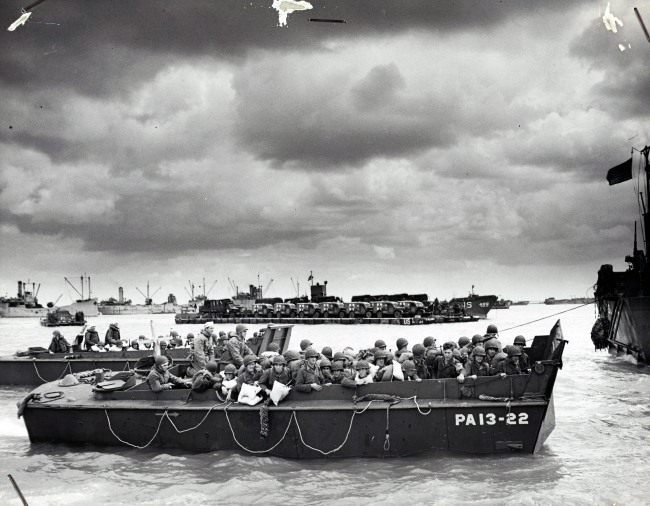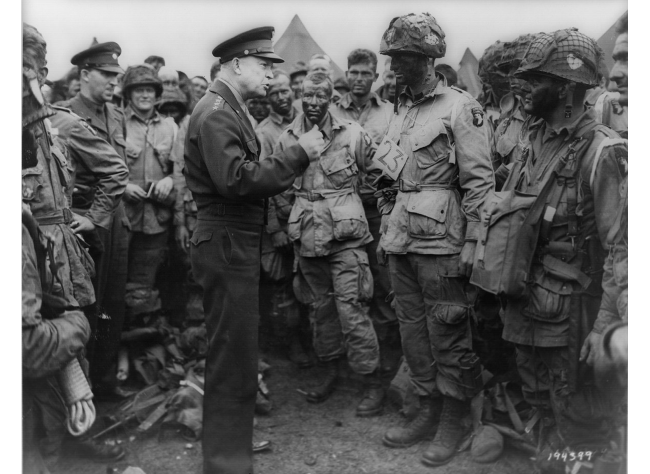Primary image: map showing the advance of the Allied armies from both the east and west at the end of World War II. (Image: The National WWII Museum.)
The US involvement in the European theater of operations was mainly confined to western Europe and Italy, but some of the war’s most savage fighting occurred on the Eastern Front, where the Axis powers had set out to conquer the Balkan Peninsula and the immense reaches of the Soviet Union. More combatants were killed on the Eastern Front than in all other theaters of World War II combined. These bitterly contested, racial battles (Adolf Hitler had vowed to exterminate the eastern Slavs) prevented Germany from mounting a more resolute defense against Allied armies in Normandy, and later, on the Reich’s western borders.
As early as 1923, when Hitler authored Mein Kampf, he believed Germany’s destiny lay in defeating its historic enemy, France, and pushing eastward into the Soviet Union, exterminating both communism and the Slavic peoples. But he didn’t want to fight both countries at the same time, especially if Great Britain came to the defense of France.
Accordingly, in August 1939, Hitler signed a nonaggression pact with the Soviet Union. The treaty also included a secret agreement to divide Poland, the Baltic States (Latvia, Estonia, and Lithuania), Finland, and Romania into German and Soviet spheres of influence. Neither country fully trusted the other, but the agreement achieved short-term goals for both parties. Germany was free to attack Poland and France without worrying about a Soviet invasion, and the Soviets could take control over parts of eastern Europe without fear of German retaliation.
After Germany invaded Poland in September 1939, Soviet troops moved into parts of eastern Europe, occupying 286,000 square miles of territory containing 20 million people. This action was permitted under the terms of the nonaggression pact, but it endangered Hitler’s plans for expansion eastward. “The sooner Russia is smashed the better,” he told his generals.
On June 22, 1941, Hitler took his greatest gamble, unleashing Operation Barbarossa, a three million-man invasion of the Soviet Union. The invasion was spectacularly effective in its early stages. By September, the Red Army had sustained some 2.5 million casualties. But it turned out to be a fatal mistake. The Soviet Union was one of only two countries (the other was the United States) Germany could not defeat. The Red Army was the largest in the world, comprising over 250 divisions, and the Soviet Union was the world’s largest country by area, with vast natural resources. Undaunted, Hitler was confident the Soviet Union would fall to his armies in a matter of months. Its military equipment was outmoded, its generals were inept, and it had great difficulty defeating tiny Finland the previous year. There was also strong opposition to Joseph Stalin’s repressive regime in the Ukraine and other Soviet provinces. “We have only to kick in the door,” Hitler said, “and the whole rotten structure will come crashing down.”
The United States and Great Britain were barely on speaking terms with Stalin’s communist regime but both eventually joined forces with the “Reds” because they shared a common enemy. “Any man or state who fights on against Nazism will have our aid,” Winston Churchill told the British people in a radio address.
The fighting on the Eastern Front was terrible and incessant, brutal beyond belief. Both sides fought with demonic fury—the Germans to crush the hated Slavs, and the Soviets to defend the sacred soil of Mother Russia. Atrocities including beheadings and mass rapes occurred daily. Millions of captured soldiers died of exposure and maltreatment. The Germans besieged Leningrad and tried to subdue it by starving its entrapped people.

Like this article? Read more in our online classroom.
From the Collection to the Classroom: Teaching History with The National WWII Museum
At Stalingrad, the pivotal battle of World War II, Hitler had ordered that the entire male population of the city of one million be killed and that all females be deported. No battle in history was more ferociously waged. In house-to-house, factory-to-factory fighting, snipers were used to great effect by both sides, and the butcher’s bill ran high. The Axis forces suffered 850,000 casualties and the Soviets 750,000. Stalin considered his losses necessary. The surrender of the city would have been an irreversible victory for the Nazis.
Millions of victims of the German invasion were noncombatants. Jews and Slavic peasants were killed by the German army—the Jews by rifle squads that followed the army. Hitler’s racial crusade against the Slavs would backfire, however, driving potential Nazi collaborators back into the arms of the tyrannical dictator Stalin.
After the Red Army prevented the Wehrmacht from taking Moscow in 1941 and prevailed at Stalingrad—one of the most decisive battles in history—it began a counteroffensive that drove the enemy all the way back to Berlin in 1945. In one of the final stages of the Red offensive, Soviet advances in the summer of 1944 drew away German forces that could have blunted the Allied offensive in Normandy.
